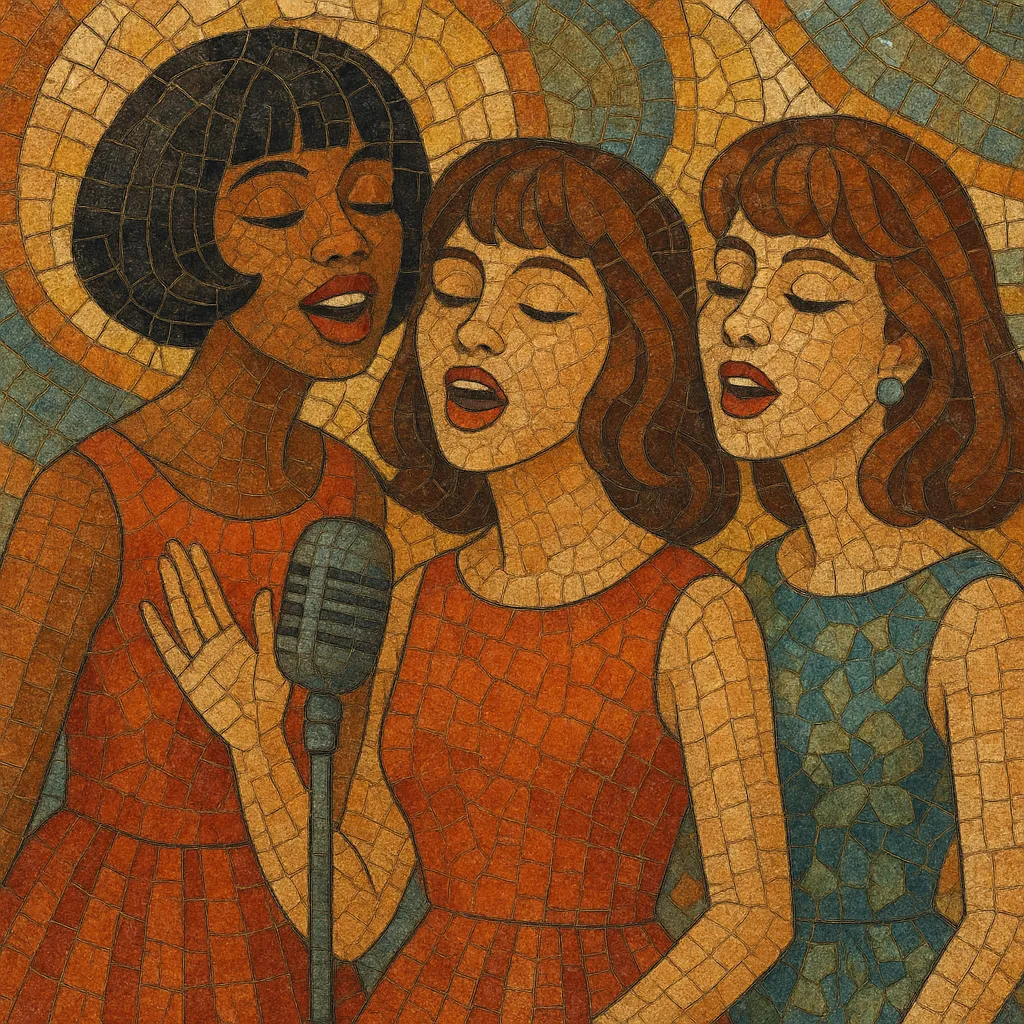Girl group is a pop- and R&B-rooted vocal group tradition defined by all-female ensembles whose songs emphasize memorable hooks, close harmonies, and teen-focused narratives about love, longing, friendship, and empowerment.
Although female vocal groups existed earlier, the term “girl group” most strongly denotes the early‑to‑mid‑1960s era shaped by the Brill Building writing teams, Motown’s artist-development system, and producers such as Phil Spector. Canonical records combine doo‑wop harmony language, gospel-inflected lead vocals, and sparkling pop arrangements with handclaps, tambourine, string sweetening, and the “Wall of Sound.”
Across subsequent decades the template evolved—from 1970s soul and disco through 1990s contemporary R&B and 2000s–2020s global idol scenes—while retaining core hallmarks: tightly blended vocals, catchy chorus-first songwriting, and a strong visual identity with coordinated fashion and choreography.
Female vocal trios and quartets date back to earlier popular music (e.g., The Andrews Sisters), but the modern girl group sound crystallized around 1959–1962 in the United States. Doo‑wop’s street‑corner harmonies, gospel’s fervor, and pop’s compact song forms converged in New York’s Brill Building ecosystem, where songwriting teams (Goffin–King, Mann–Weil, Barry–Greenwich) crafted teen‑oriented hits for studio‑assembled groups. Producers like Phil Spector supplied orchestral pop grandeur via the “Wall of Sound.”
The Shirelles’ “Will You Love Me Tomorrow” (1960) signaled the breakthrough, followed by hits from The Crystals, The Ronettes, The Marvelettes, The Chiffons, The Shangri‑Las, and others. Motown in Detroit refined the model with artist development, house band The Funk Brothers, and crossover‑ready material—The Supremes, Martha & The Vandellas, and The Marvelettes epitomized the label’s polished approach. Lyrics foregrounded adolescent desire, heartache, and independence, often delivered through call‑and‑response and tight three‑part blends.
The British Invasion and changing rock tastes cooled the initial wave, yet Motown girl groups sustained success into the late 1960s. In the 1970s–80s, all‑female acts reemerged across pop, new wave, and post‑punk (e.g., The Go‑Go’s, Bananarama), while the harmony‑group concept fed into disco and adult contemporary. The 1990s brought a major R&B‑pop renaissance—En Vogue, TLC, and Destiny’s Child coupled sophisticated vocal arrangements with hip‑hop production and assertive, feminist-leaning themes. In the UK, the Spice Girls globalized a more explicitly branded, personality‑driven “Girl Power” template.
Japan’s idol kayō lineage and J‑pop groups adapted the formula with rotating memberships and multimedia fandom. South Korea’s K‑pop system industrialized it further with rigorous training, synchronized choreography, and concept-driven comebacks (e.g., Girls’ Generation, 2NE1, BLACKPINK, NewJeans). Similar scenes developed across Greater China, Southeast Asia, and Latin America (e.g., P‑pop, T‑pop), proving the girl group model’s durability: high-concept visuals, tight vocal stacks, and irresistible pop hooks remain its core.


